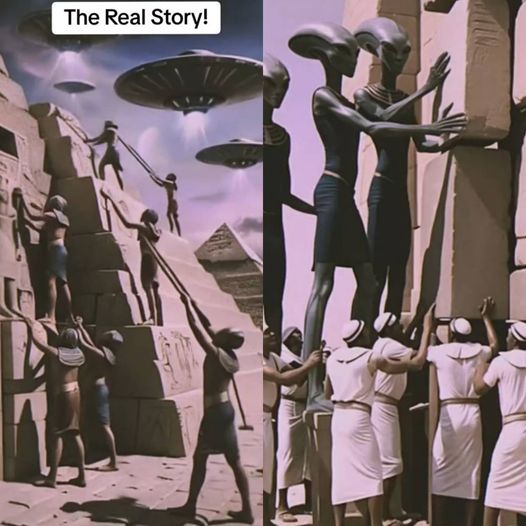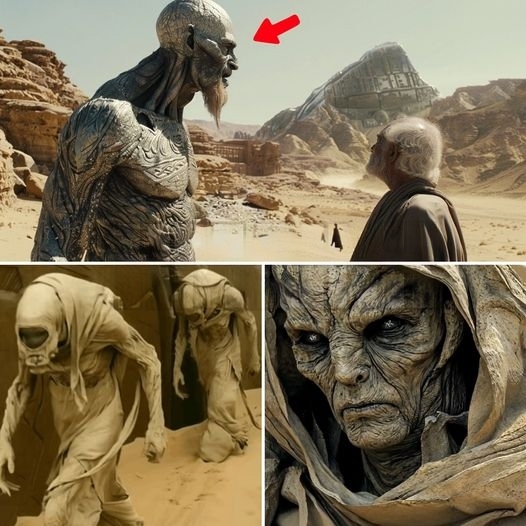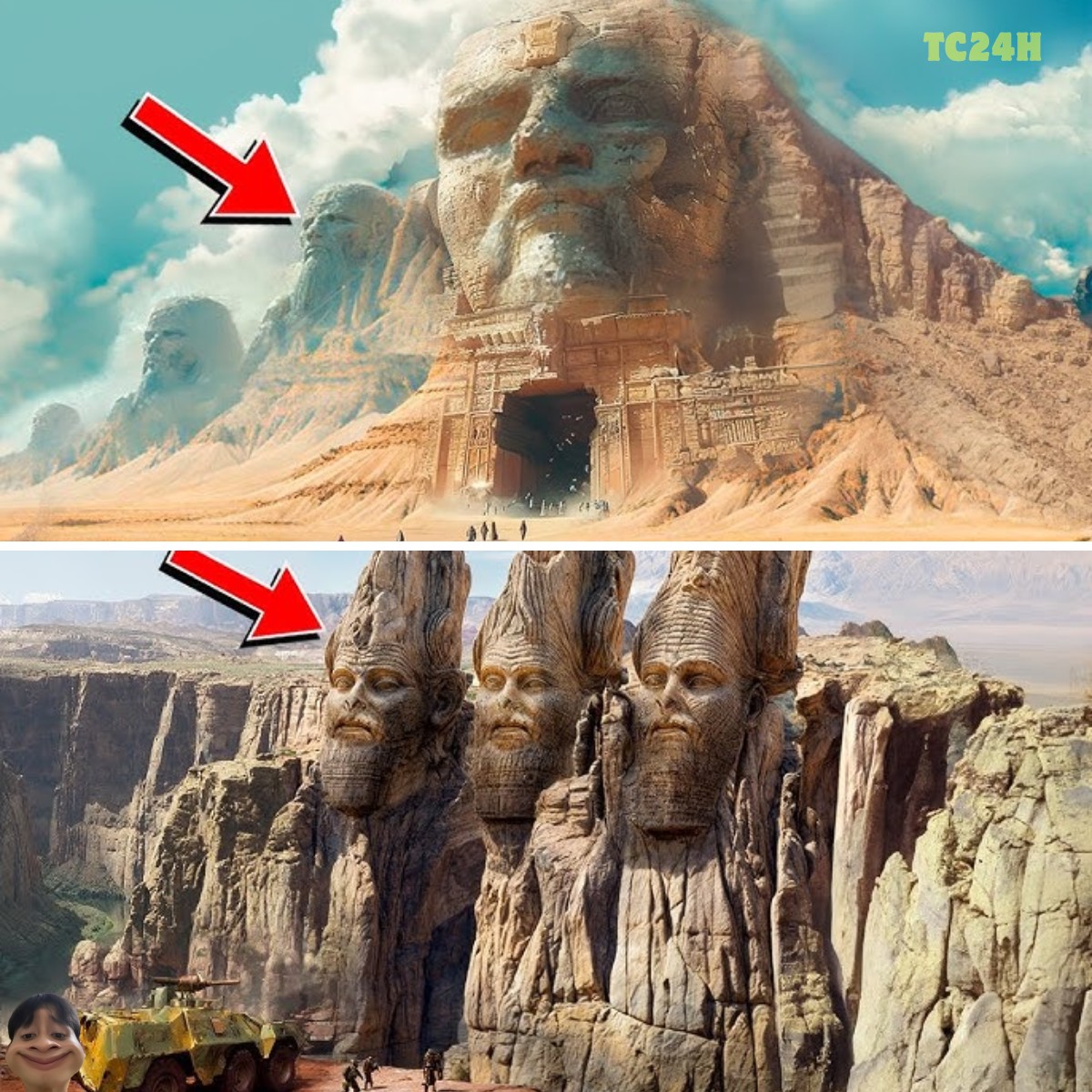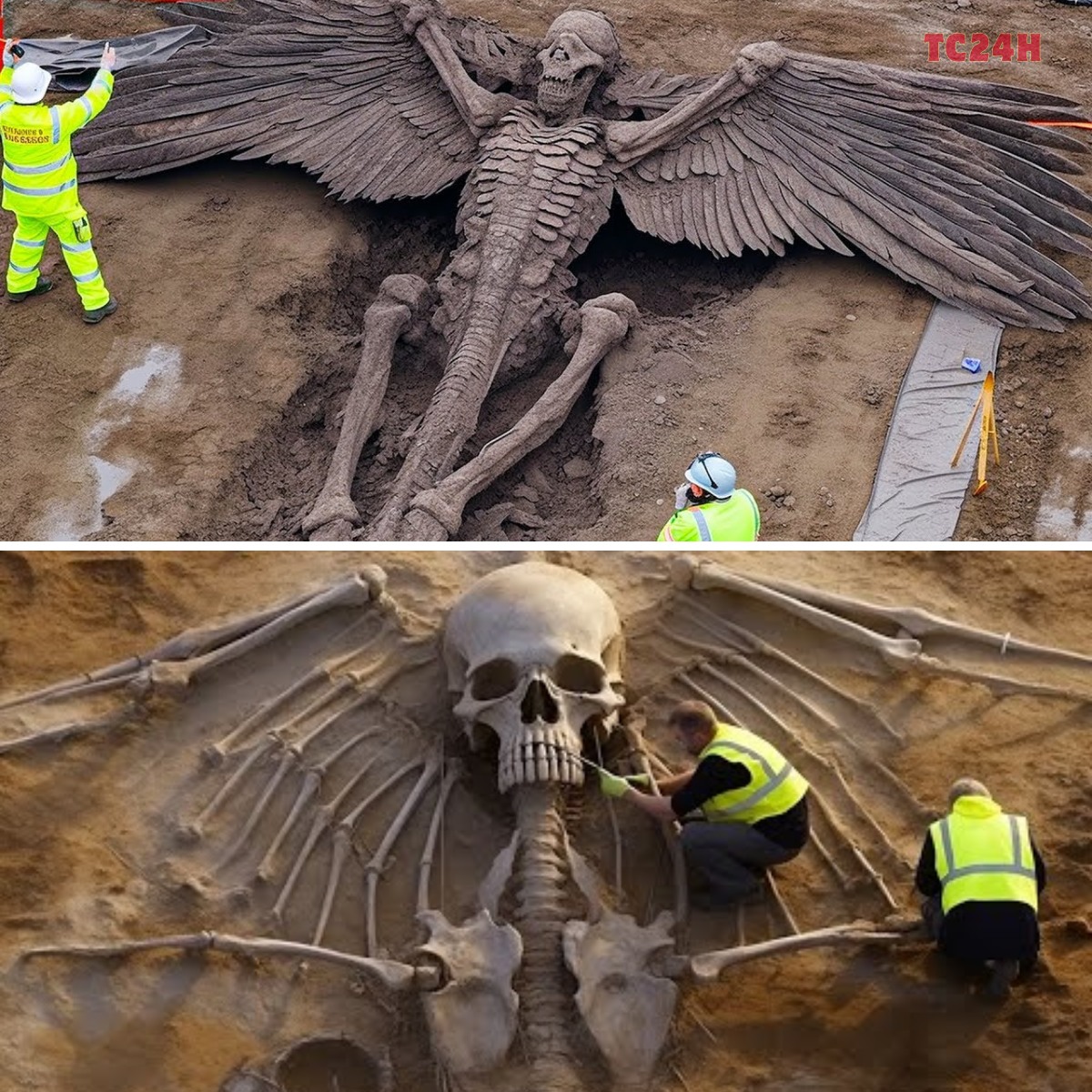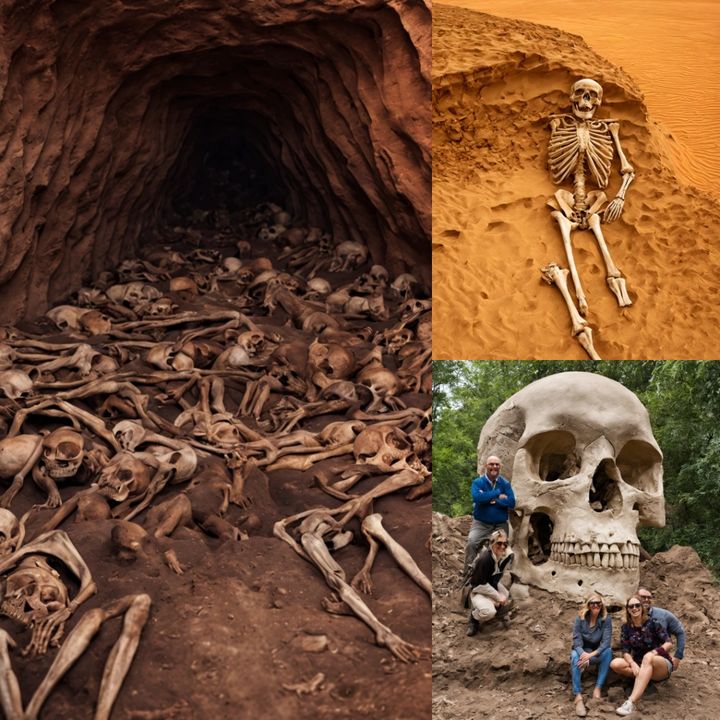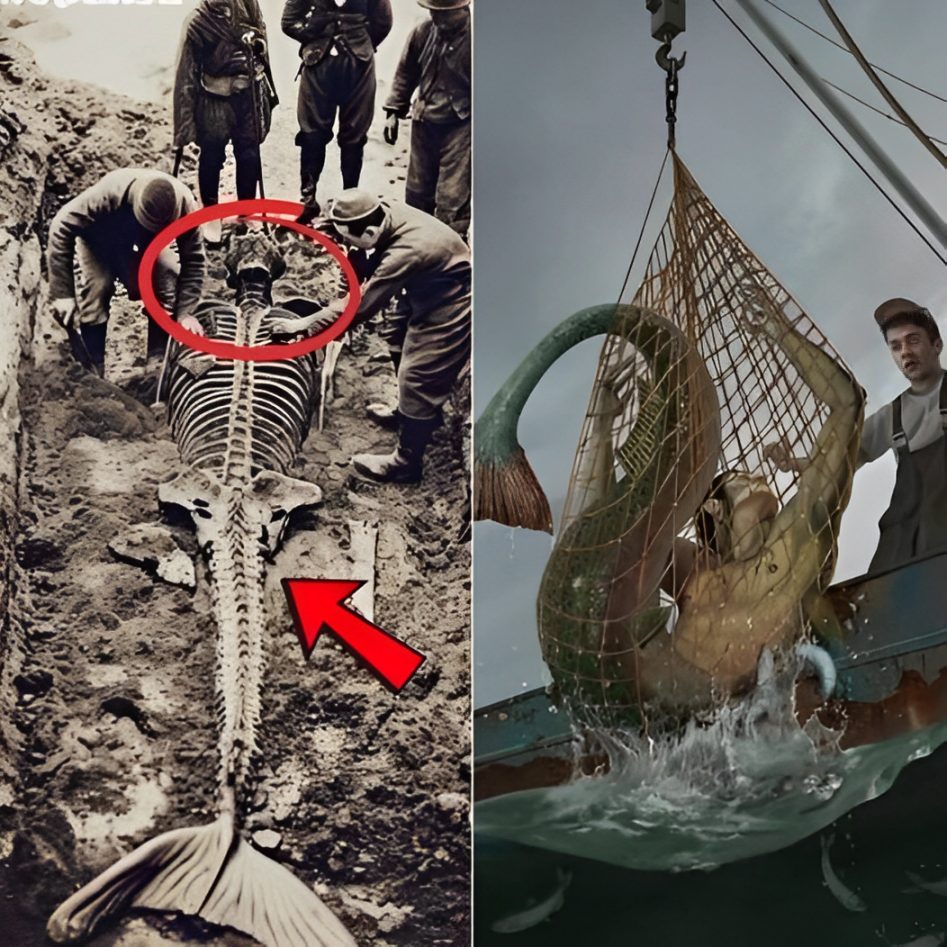The mummy of Queen Nodjmet was found in the Deir el-Bahari Royal Cachette (DB320). The mummy had been given artificial eyes, made of white and black stones. The eyebrows are real hair and she wears a wig. Her body and parts of her face were colored to give her a more lively appearance.
Nodjmet was an ancient Egyptian noble lady of the late 20th Dynasty or early 21st Dynasty of Egypt, the wife of Herihor, High Priest of Amun at Thebes. She may have been a daughter of Ramesses XI. Early in her life, she held titles such as Lady of the House and Chief of the Harem of Amun.
 King Herihor and Queen Nodjmet adore Osiris, detail from the Book of the Dead of Nodjmet
King Herihor and Queen Nodjmet adore Osiris, detail from the Book of the Dead of Nodjmet
With her mummy two Books of the Dead were found. One of them, Papyrus (EA10490), now in the British museum, belonged to “the King’s Mother Nodjmet, the daughter of the King’s Mother Hrere”. The other Book of the Dead from her tomb can also be found in the British Museum’s collection (EA10541) and is one of the most beautifully illustrated papyri from ancient Egypt.
Nodjmet had several 𝘤𝘩𝘪𝘭𝘥ren: Heqanefer, Heqamaat, Ankhefenmut, Faienmut, and the future High Priest of Amun/King Pinedjem I.
Rarely displayed, the version of this funeral text that accompanied Queen Nodjmet into the afterlife – richly illustrated on a piece of papyrus more than four meters long and 3,000 years old – will appear in the British Museum exhibition.
The body of the queen was filled with sawdust and her hands were set by her sides. Between the layers of her wrappings, a heart scarab and four small figurines of the Four Sons of Horus were found. The embalming wound, as well as her eyes, nose, mouth and ears were covered by wax.
 Mummy of Queen Nodjmet
Mummy of Queen Nodjmet
“The 21st Dynasty is known to Egyptology as the apex of mummification technique for a reason. For the first time, elites developed an interest in the preserved body’s discrete self-sufficiency.
At the close of the Bronze Age, we see a number of changes in the embalmer’s art. First, it became the norm to return internal organs to the body after preservation rather than interring them in separate canopic jars and chests. 21st Dynasty mummies were not split into different containers. Instead, when the embalmed organs were returned to the mummy, the corpse was intact and whole—that is, self-contained.
There were a number of other innovations: The natural and full appearance of the body was now restored. The mummy of Nodjmet has packing under her cheeks to restore the fullness of the face, as well as external padding on the body to restore the lifelike quality of torso and limbs. Previously, in the New Kingdom, a mummy’s skin was left slack and drawn, allowing desiccated flesh to sink into bones.
Now a more lifelike face was desired. 21st Dynasty embalmers also repaired any defects in the body and skin. They painstakingly repaired tears with leather patches and plaster. They even fixed anatomical problems with additional limbs of wood. The skin of the mummy was finished with a coating of plaster plus red or yellow paint, depending on the 𝓈ℯ𝓍 of the deceased.”
— Objectifying the Body: The Increased Value of the Ancient Egyptian Mummy during the Socioeconomic Crisis of Dynasty Twenty one, by Kathlyn Cooney
The Royal Mummy of Nodjmet
Nodjmet was one of the first mummies discovered at the Deir el-Bahari Cachette (TT320) in the 19th century. The body is that of an old woman. She had been embalmed with a new mummification technique which involved the use of fake eyes and the packing of the limbs.
Related: Mummy of Maatkare Mutemhat
The fake eyes were constructed out of black and white stones, in order to give the mummy a more life-like appearance. Her limbs and face were also colored to show appearance of liveliness. Although the queen was an old woman, a wig and false eyebrows (made out of human hair) were placed to achieve a look of youthfulness.
 Mummy of Queen Nodjmet
Mummy of Queen Nodjmet
Nodjmet’s body was disturbed in modern times. She has gashes on her forehead, nose, and cheeks from when thieves searched her body for valuables. The impression of jewelry on her right arm indicates that some valuables were stolen.
Third Intermediate Period, 21st Dynasty, ca. 1069-945 BC. Now in the Egyptian Museum, Cairo. JE 26215
